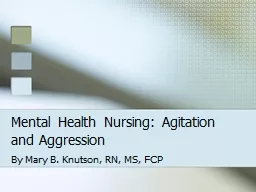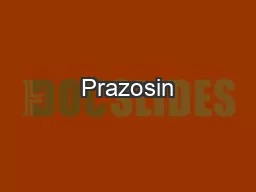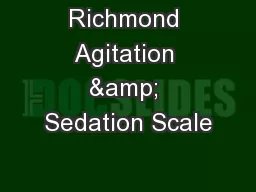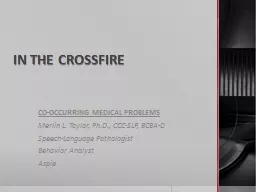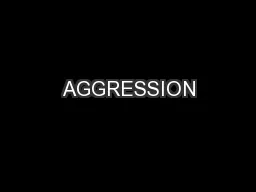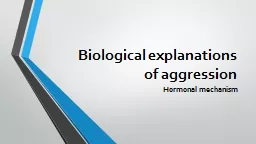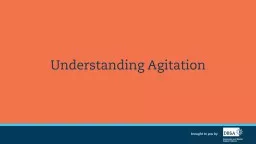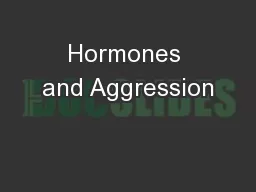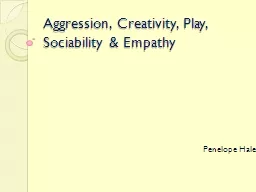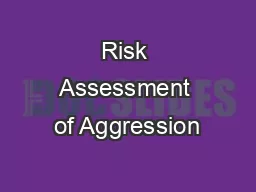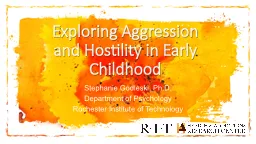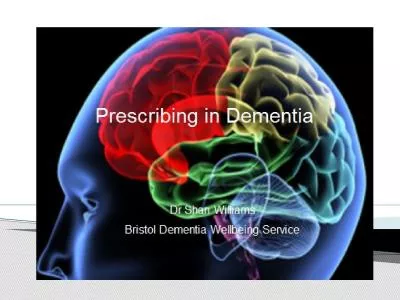PPT-Mental Health Nursing: Agitation and Aggression
Author : briana-ranney | Published Date : 2016-09-01
By Mary B Knutson RN MS FCP Definition of Agitation Restlessness and increased psychomotor activity that is usually an expression of emotional tension Agitated patients
Presentation Embed Code
Download Presentation
Download Presentation The PPT/PDF document "Mental Health Nursing: Agitation and Agg..." is the property of its rightful owner. Permission is granted to download and print the materials on this website for personal, non-commercial use only, and to display it on your personal computer provided you do not modify the materials and that you retain all copyright notices contained in the materials. By downloading content from our website, you accept the terms of this agreement.
Mental Health Nursing: Agitation and Aggression: Transcript
Download Rules Of Document
"Mental Health Nursing: Agitation and Aggression"The content belongs to its owner. You may download and print it for personal use, without modification, and keep all copyright notices. By downloading, you agree to these terms.
Related Documents

